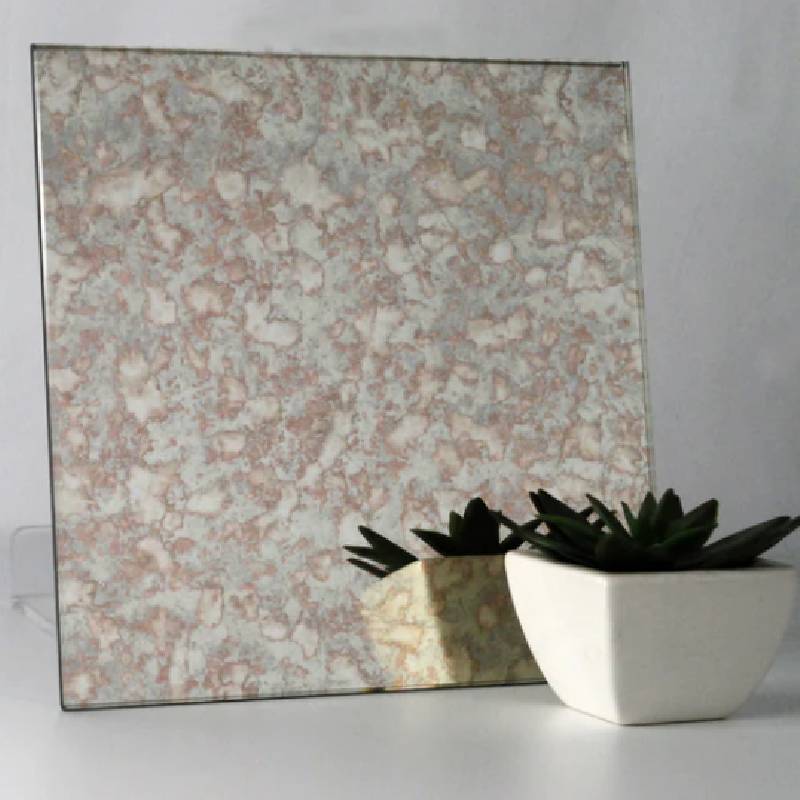When it comes to choosing between tempered glass and normal glass, the decision often hinges on specific needs and applications. Understanding the difference between these two types of glass not only aids in making an informed choice but also ensures that safety, durability, and aesthetics are not compromised.

Tempered glass, also known as toughened glass, is a type of safety glass treated with heat or chemicals to increase its strength compared to normal glass. The process involves heating the glass to a high temperature and then rapidly cooling it—a method that increases its compressive surface stress, making it about four to five times stronger than untreated glass. This inherent strength is one of the primary reasons tempered glass is often chosen for applications where safety is paramount.
A firsthand experience with tempered glass reveals its benefits in handling physical stress. Unlike normal glass, which shatters into jagged shards capable of causing severe injuries, tempered glass crumbles into small, blunt pieces that significantly reduce the likelihood of injury upon breakage. This is why tempered glass is commonly used in automobile windows, glass doors, shower enclosures, and public buildings—situations where human safety cannot be compromised.

Moreover,
the thermal resistance of tempered glass is another noteworthy advantage. Its ability to withstand high temperatures and sudden changes in temperature without cracking makes it ideal for use in environments exposed to thermal stress, such as in oven doors and as a protective layer for electronic devices. A tech expert’s insight highlights the pivotal role of tempered glass in protecting high-value electronics, which rely on this sturdy material to safeguard delicate components while maintaining user safety.
On the aesthetic front, tempered glass offers versatility without sacrificing design elements. Skilled glass artisans and interior designers often commend its clean lines and modern appeal. It can be custom-cut and shaped to fit unique architectural designs, offering seamless integration into contemporary interiors and exteriors. This attribute is particularly valued in luxury spaces where style and safety must coalesce.
tempered glass and normal glass
In contrast, normal glass, often referred to as annealed glass, is the standard glass type encountered in everyday life. Its production requires no special heat treatment, making it less expensive than tempered glass. Annealed glass can be a suitable choice for applications where high strength is not a critical factor. From picture frames to certain types of windows and displays, normal glass is prevalent in settings where its vulnerability to breaking does not pose significant safety risks.
However, when it comes to credibility and authoritative applications, tempered glass often overshadows normal glass due to its superior durability and safety features. Industry experts underscore its preference in environments where human impact is likely, such as in schools and retail establishments. Building regulations and safety codes in many regions also mandate the use of tempered glass in these contexts, making it a trusted material by architects and contractors alike.
Despite these advantages, both tempered and normal glass have their distinct places in modern construction and design. It's crucial to assess the specific needs of each project or product to determine the appropriate type of glass to use. For instance, while a decorative installation might benefit aesthetically from annealed glass due to its lower cost, a glass railing system for a staircase would better suit tempered glass’s robust and secure qualities.
Understanding the nuanced differences between tempered and normal glass can greatly enhance one’s ability to select the most appropriate glass type for their needs. Consulting with glass suppliers, engineers, and designers, who can provide tailored advice based on an evaluation of specific safety and design requirements, is an excellent step in guaranteeing the best possible outcome for any project. This approach not only fosters trust in the material chosen but also ensures that every glass application is executed with precision and care.
By integrating expertise in materials science, a comprehensive understanding of safety regulations, and a dedication to quality, both consumers and professionals can make informed decisions that balance effectiveness, safety, and aesthetics—all essential components for success in today’s diverse applications of glass.
 Afrikaans
Afrikaans  Albanian
Albanian  Amharic
Amharic  Arabic
Arabic  Armenian
Armenian  Azerbaijani
Azerbaijani  Basque
Basque  Belarusian
Belarusian  Bengali
Bengali  Bosnian
Bosnian  Bulgarian
Bulgarian  Catalan
Catalan  Cebuano
Cebuano  Corsican
Corsican  Croatian
Croatian  Czech
Czech  Danish
Danish  Dutch
Dutch  English
English  Esperanto
Esperanto  Estonian
Estonian  Finnish
Finnish  French
French  Frisian
Frisian  Galician
Galician  Georgian
Georgian  German
German  Greek
Greek  Gujarati
Gujarati  Haitian Creole
Haitian Creole  hausa
hausa  hawaiian
hawaiian  Hebrew
Hebrew  Hindi
Hindi  Miao
Miao  Hungarian
Hungarian  Icelandic
Icelandic  igbo
igbo  Indonesian
Indonesian  irish
irish  Italian
Italian  Japanese
Japanese  Javanese
Javanese  Kannada
Kannada  kazakh
kazakh  Khmer
Khmer  Rwandese
Rwandese  Korean
Korean  Kurdish
Kurdish  Kyrgyz
Kyrgyz  Lao
Lao  Latin
Latin  Latvian
Latvian  Lithuanian
Lithuanian  Luxembourgish
Luxembourgish  Macedonian
Macedonian  Malgashi
Malgashi  Malay
Malay  Malayalam
Malayalam  Maltese
Maltese  Maori
Maori  Marathi
Marathi  Mongolian
Mongolian  Myanmar
Myanmar  Nepali
Nepali  Norwegian
Norwegian  Norwegian
Norwegian  Occitan
Occitan  Pashto
Pashto  Persian
Persian  Polish
Polish  Portuguese
Portuguese  Punjabi
Punjabi  Romanian
Romanian  Russian
Russian  Samoan
Samoan  Scottish Gaelic
Scottish Gaelic  Serbian
Serbian  Sesotho
Sesotho  Shona
Shona  Sindhi
Sindhi  Sinhala
Sinhala  Slovak
Slovak  Slovenian
Slovenian  Somali
Somali  Spanish
Spanish  Sundanese
Sundanese  Swahili
Swahili  Swedish
Swedish  Tagalog
Tagalog  Tajik
Tajik  Tamil
Tamil  Tatar
Tatar  Telugu
Telugu  Thai
Thai  Turkish
Turkish  Turkmen
Turkmen  Ukrainian
Ukrainian  Urdu
Urdu  Uighur
Uighur  Uzbek
Uzbek  Vietnamese
Vietnamese  Welsh
Welsh  Bantu
Bantu  Yiddish
Yiddish  Yoruba
Yoruba  Zulu
Zulu 


